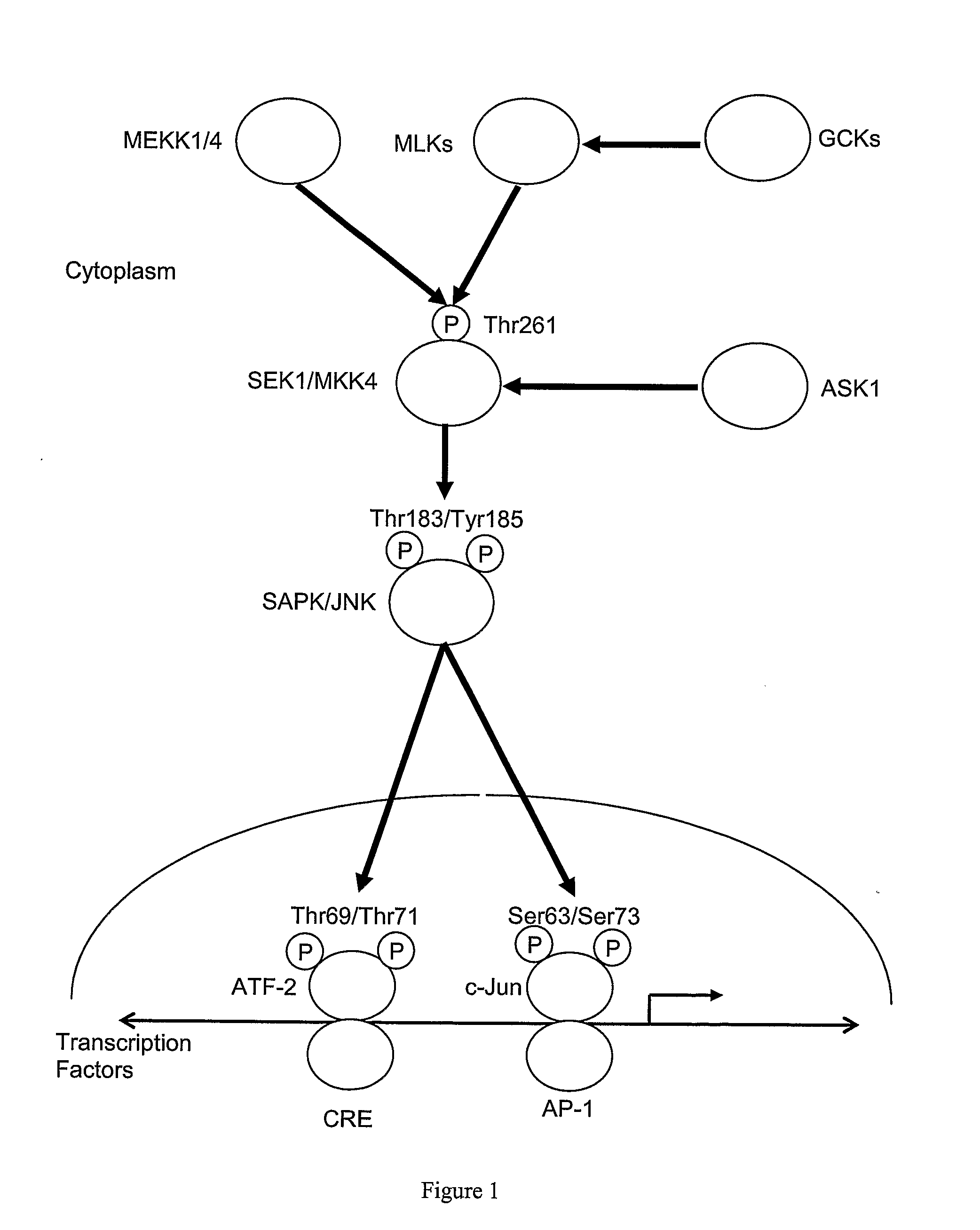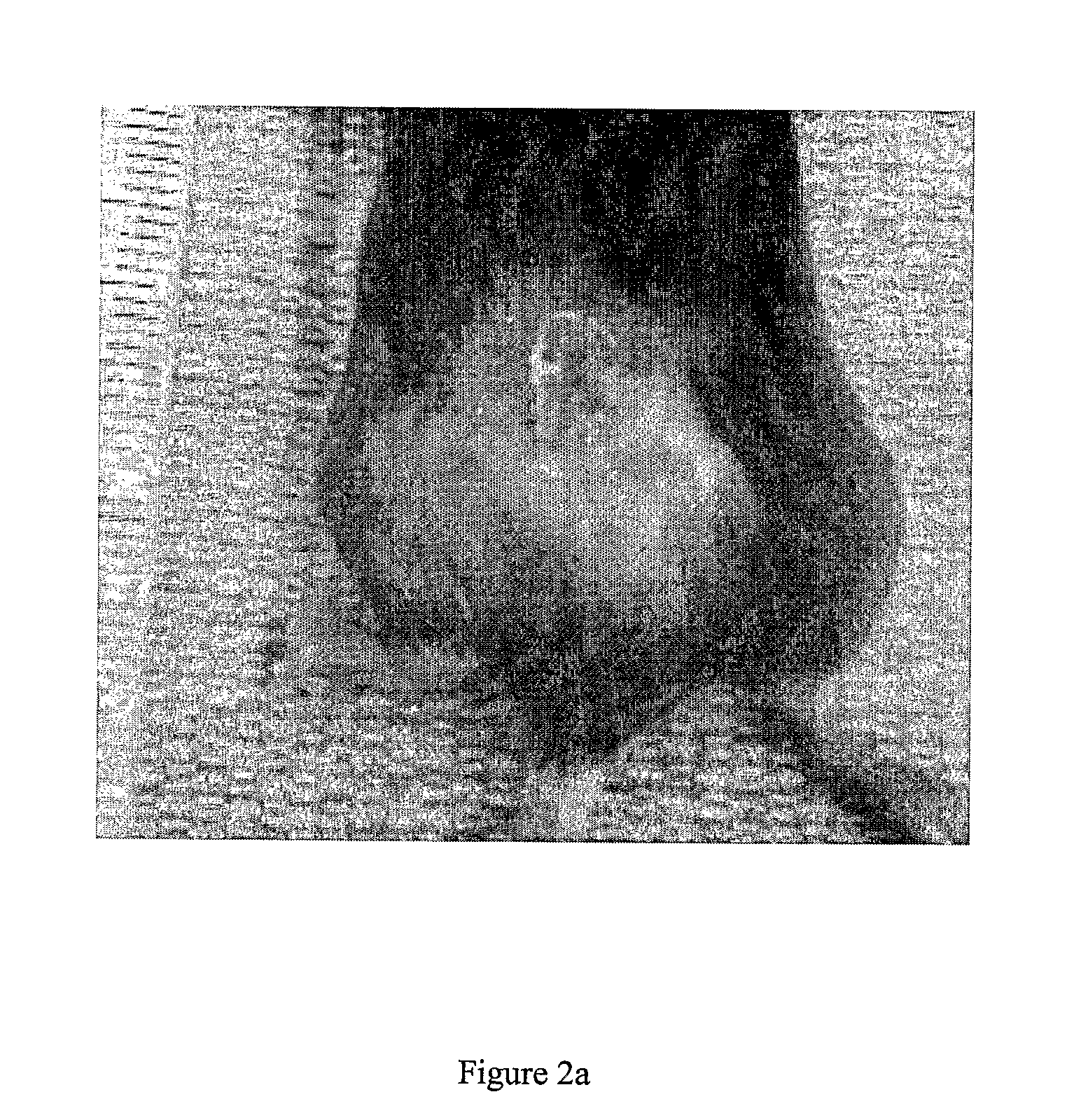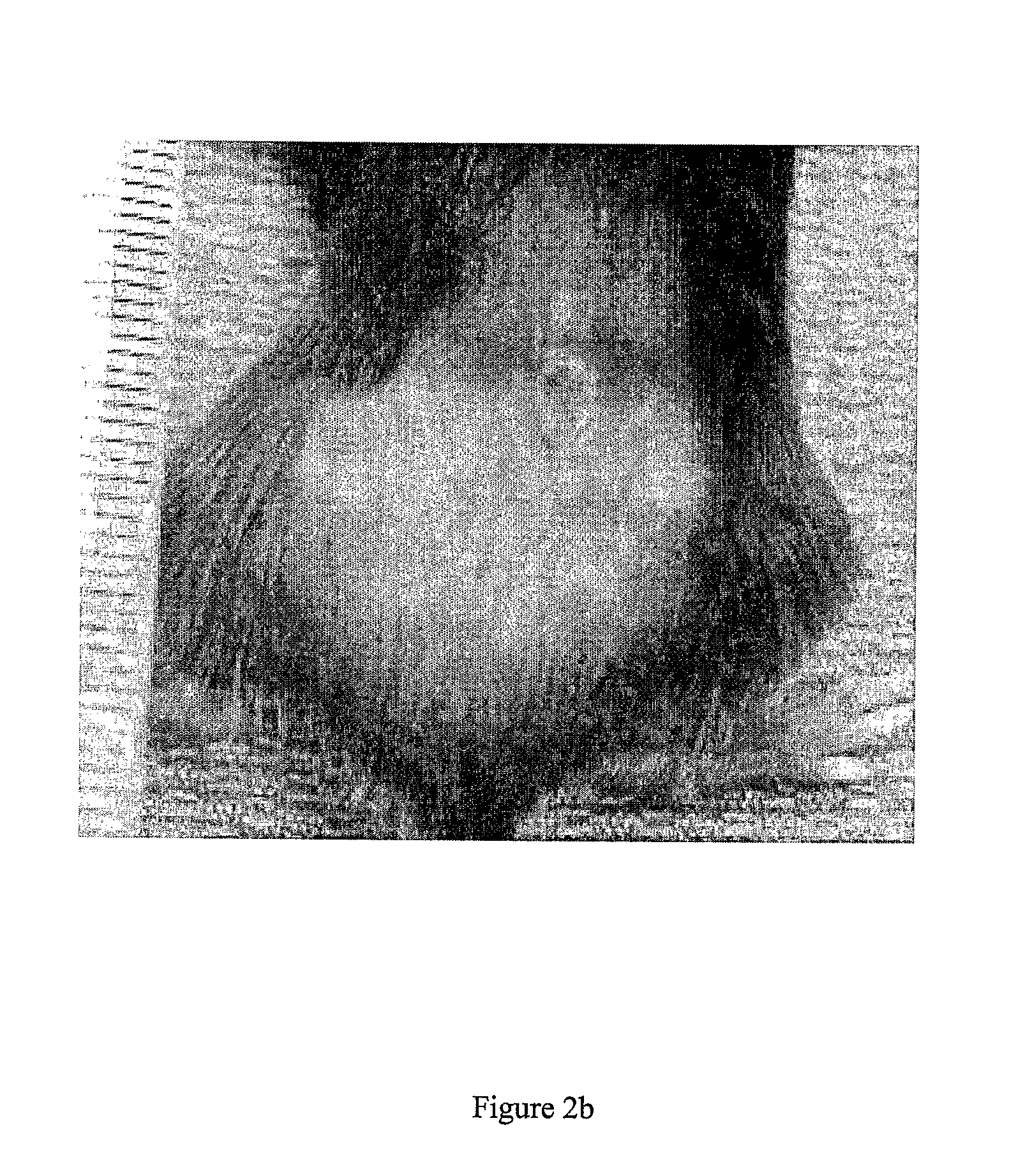Compositions and uses thereof for the treatment of wounds
a technology of topical formulations and wounds, applied in the field of topical formulations, can solve the problems of complex wounds that are often chronic, damage to the skin layer of a subject, and complication of dermal ulcers, and achieve the effects of enhancing the proliferation of cells, reducing or preventing apoptosis and/or necrosis
- Summary
- Abstract
- Description
- Claims
- Application Information
AI Technical Summary
Benefits of technology
Problems solved by technology
Method used
Image
Examples
example 1
Isolation of an Inhibitor of AP-1 Signaling
[0322]Nucleic acid was isolated from the following bacterial species:
1Archaeoglobus fulgidis2Aquifex aeliticus3Aeropyrum pernix4Bacillus subtilis5Bordetella pertussis TOX66Borrelia burgdorferi7Chlamydia trachomatis8Escherichia coli Kl29Haemophilus influenzae (rd)10Helicobacter pylori11Methanobacterium thermoautotrophicum12Methanococcus jannaschii13Mycoplasma pneumoniae14Neisseria meningitidis15Pseudomonas aeruginosa16Pyrococcus horikoshii17S nechosistis PCC 680318Thermoplasma volcanium19Thermotoga maritima
[0323]Nucleic acid fragments were generated from the genomic DNA of each genome using 2 consecutive rounds of primer extension amplification using tagged random oligonucleotides with the sequence:
5′-GACTACAAGGACGACGACGACAAGGCTTATCAATCAATCAN6-3′.
The PCR amplification was performed using the Klenow fragment of E. coli DNA polymerase I in the following primer extension reaction:
ReagentDNA (100-200 ng)VolumeOligonucleotide comprising SEQ ID NO...
example 2
Treatment of Burns Using an Inhibitor of c-Jun Dimerization
1.1 Materials and Methods
Animals
[0352]8 week old C57 / B16 mice were purchased from the Animal Resource Center, Murdoch University, Western Australia and used for all experiments. All experiments were approved by the necessary institutional animal ethics committees and were performed in accordance with the National Health and Medical Research Council (NHMRC) Australian Code of Practice for the Care and Use of Animals for Scientific Purposes.
[0353]A peptide used was synthesised by Mimotopes Pty Ltd (Melbourne, Australia) and supplied as a lyophilised powder (purity>90%). The peptide (H-rerrsssqiGGsrisqyaGrrrqrrkkrG-NH2) (SEQ ID NO: 104) is a D-form retro-inverted mimic of a peptide originally identified in a screen for inhibitors of AP-1 signaling e.g., by virtue of inhibiting c-Jun dimerization (as described in Example 1, i.e, a peptide comprising an amino acid sequence set forth in SEQ ID NO: 57), and is fused to the T...
example 4
An Inhibitor of AP-1 Signaling Enhances and / or Induces Cellular Proliferation
[0364]Cultures of keratinocytes (HaCaT cells) or fibroblasts were cultured in a microwell plate the presence of a peptide analog comprising the amino acid sequence set forth in SEQ ID NO: 104 at a concentration of 100 nm, 1 μM or 10 μM. Following an incubation period 24 hours, 48 hours, or 72 hours, cells were incubated in the presence of MTT for a sufficient time for a mitochondrial dehydrogenase enzyme from viable cells to cleave the tetrazolium rings of the pale yellow MTT and form dark blue formazan crystals. Cells were then solubilized and the level of formalin crystals determined using a microtitre plate reader at 492 nm.
[0365]As shown in FIG. 8a, the peptide analog enhanced and / or induced proliferation of HaCat keratinocytes, which are associated with wound healing. The peptide analog did not stimulate proliferation of fibroblast cells, which are associated with scar formation.
PUM
| Property | Measurement | Unit |
|---|---|---|
| Volume | aaaaa | aaaaa |
| Volume | aaaaa | aaaaa |
| Volume | aaaaa | aaaaa |
Abstract
Description
Claims
Application Information
 Login to View More
Login to View More - R&D
- Intellectual Property
- Life Sciences
- Materials
- Tech Scout
- Unparalleled Data Quality
- Higher Quality Content
- 60% Fewer Hallucinations
Browse by: Latest US Patents, China's latest patents, Technical Efficacy Thesaurus, Application Domain, Technology Topic, Popular Technical Reports.
© 2025 PatSnap. All rights reserved.Legal|Privacy policy|Modern Slavery Act Transparency Statement|Sitemap|About US| Contact US: help@patsnap.com



